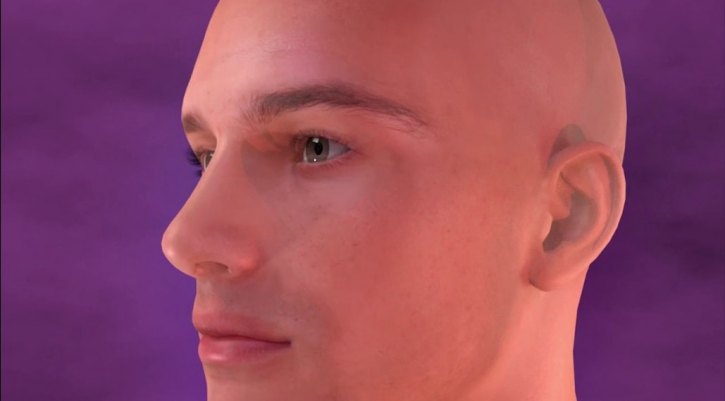New Strategy For Restoring Vision Loss in Age-Related Macular Degeneration
Vision is a coordinated effort between the eye and brain when our eyes see an object the light from its surface travels to the retina. Where it is transformed into neural signals these signals travel through the parts of the brain dedicated to vision in the primary visual cortex, the brain represents the image in a map that matches the visual world.
Our project proposes one potential idea to take advantage of this mapping so as to create a new prosthetic that will allow blind people to see but the visual pathway will be different for a person who is blind here the patient will wear a pair of eye tracking glasses that monitors.
What is happening in the visual scene these glasses will also track exactly where the eyes are pointed so that. We know which information to transmit into the central retinal part of the brain to get the information from the camera into the brain.

We will first use gene therapy to turn specific neurons in the visual pathway into photoreceptors that take the place of the damaged retinas in the eyes of a blind person. Now we can stimulate those neurons with light and our preliminary data shows that stimulation of these newly created photoreceptors drives large neural responses in the visual system.
Here is an overview of how our optogenetic brain system or observe for short will work in patient’s visual information that is centrally fixated by the eyes in the visual scene will be transmitted from the camera through ultra-wideband encrypted. Wireless telemetry to the observed implant.
Read more: Blindness, Causes, Signs and Symptoms, Diagnosis and Treatment
This suggests that if we beam in light in the correct prosthetic pattern these neurons ingrain from the brains. Visual cortex will respond like they do to real visual inputs from the eye. But we can’t just stimulate the brain without continually measuring its response.
Why the signals that the verdure on sent on work to the visual cortex flashing in green can vary in intensity in our system with each firing. We need to monitor in real-time for these variations and calibrate them to make sure that the signal sent onward to the visual cortex look like real vision.
Here’s how we will calibrate our system and it takes some scientific innovation first remember my earlier mention of the gene therapy that turned neurons in the brain into photoreceptors by also using gene therapy to film neurons in the visual cortex with bioluminescent.
Proteins and multiple colors we can make these neurons blink like a rainbow starbursts of fireflies whenever the are active here you can see over 61,000 of these labeled neurons in the largest microscopic image ever made inside the brain.
Therefore we will read out the brains response in our patients by transfecting these bioluminescent calcium indicators into the visual cortex. Second we will need to create a brain implant that contains both a video projector and a color camera.
It will beam in the I tracked video information from the scene cameras on the patients glasses and also read out the bioluminescent brain activity to make sure the signaling remains calibrated at all times observe will be surgically implanted over the visual cortex.
So as to beam the seen camera video feed to the genetically transformed photoreceptors in the brain which will stimulate visual perception with naturalistic synaptic transmission
For more product information, Please watch this video

